Dark Skies and National Parks
Featuring some of my favorite Dark Sky Parks in the Southwest - Letters from a Wanderer #47
It is International Dark Sky Week, and the end of National Parks Week in the US. The combination is a great reminder to protect dark skies and National Parks, and an opportunity to learn about Dark Sky Parks.
The first time I heard about Dark Sky Parks (and subsequently about Dark Sky places) was in Chaco. The only national park in the US with its own observatory, Chaco has a great program talking about the night skies.
Intrigued, I started learning more about dark skies and the International Dark Skies Association, now DarkSky International.
Jeff and I cared about the dark skies before that trip, though. An amateur astronomer, he had been viewing the night sky in his hometown, in New Jersey, since he was a child.
When we first visited Arizona, he realized - and told me - how much better stargazing was here. So, at least one of the reasons we live in the state has to do with the night sky.
The crisp, clear, dry air makes the desert Southwest one of the best places for stargazing. This is due to the lack of humidity, since the water particles defining it would amplify light pollution. Besides the lack of humidity, the area also features long stretches of areas with no urban development, adding to the likelihood of dark skies.
I’ve never seen the night sky as clear, as beautiful as during my first camping trip through the Southwest. The first night we camped in Petrified Forest National Park in Arizona, I noticed the Milky Way stretching across the sky, filled with millions of stars.
And then I noticed it again when we camped at Sunset Crater National Monument during the same trip!
Those experiences got me hooked on sky viewing, giving us another thing we could enjoy together. Eventually, Jeff and I joined an astronomy club and took a telescope mirror-making class. We both made telescope mirrors and built my small 6-inch mirror into a telescope we could carry with us.
We love National Parks! We always carry a pass, since we seek out every park in the area we visit. We also love the dark skies. Which makes us notice and appreciate the dark sky parks.
We don’t need a telescope to enjoy the night in Dark Sky Parks.
National Parks, far from urban development, are some of the best places to enjoy dark skies. Depending on their location and their landscape, some parks feature darker skies than others, earning the designation of Dark Sky Park status.
When we visit a park, we always make it a point to walk outside in the middle of the night (in a moonless night or after the moon sets) to enjoy the dark skies, point out the constellations, and marvel at the way the Milky Way stretches across the sky.

Over the years, we visited quite a few Dark Sky Parks, most in the desert Southwest.
Flagstaff Area Parks
I mentioned Sunset Crater earlier as one of the first dark sky parks we camped at. While you would think dark sky parks are all in the middle of nowhere, Sunset Crater is surprisingly close to Flagstaff, one of the larger towns in Arizona.
However, Flagstaff, as large as it is (besides being a college town), is a dark sky place. In fact, it was the first-ever dark sky city, designated on October 24th, 2001, for its pioneering work balancing preservation of dark skies with concerns about public safety.
So, no wonder that all three park units in the Flagstaff area, Sunset Crater, Wupatki, and Walnut Canyon National Monuments, received a Dark Sky Park designation in 2016.
Sunset Crater
The only one of the three with a campground, Sunset Crater preserves the land surrounding a volcano that erupted in the 11th century. The gorgeous crater that gave the park its name was also the catalyst for creating the park in the first place, since it needed to be protected from being blown up for a Hollywood movie.
Since Sunset Crater offers camping opportunities in the Bonito Lava Flow, it is the place we usually watch the night sky in the area.
Besides enjoying the dark skies on our own, we sometimes participate in star-viewing parties hosted by the Lowell Observatory or astronomy clubs from Flagstaff in the park. It’s always fun to watch stars and constellations through different types and sizes of telescopes brought out by the Observatory or members of the clubs.
Wupatki
Down the road from Sunset Crater, Wupatki preserves several archaeological sites, ancient Pueblo villages built after the volcano erupted.
The largest pueblo that gave the park its name, Wupatki, includes a 100-room pueblo, a kiva, and a ballcourt. Several smaller pueblos, Wukoki, Citadel, Nalahiku, Lomaki, and Box Canyon ruins are also included in the park.
Walnut Canyon
Walnut Canyon showcases cliff dwellings built by the Sinagua into the sides of the canyon and along the rim. The park got its name from the black walnut trees growing at the bottom of the canyon.
The Island Trail leads to the cliff dwellings on the side of the canyon, while the Rim Trail leads to a pit-house and a two-room site in a pinion-juniper forest, all of it offering a glimpse into the lives of the ancient Sinagua.
Petrified Forest National Park

I mentioned earlier that camping at Petrified Forest in 1993 was one of the catalysts of my interest in the night sky.
A dark sky park since 2018, Petrified Forest National Park lies in one of the most desolate areas of Arizona, with about half its territory designated wilderness, making it one of the darkest places at night.
Named for the colorful petrified tree trunks dotting the landscape, the high-desert park features a unique landscape where nature, geology, archaeology, and paleontology meet. One of the few places on the planet where we can find fossil records from the Late Triassic Period, the park is in the colorful Painted Desert, with layers upon layers of different pastel colored rocks.
Grand Canyon National Park
We often visit - and camp at - the Grand Canyon National Park, another Dark Sky Park designated in 2016.
One of the most recognized National Parks, the Grand Canyon is also one of the natural wonders of the world, one mile (about 2 km) deep and up to 18 miles (29 km) wide. The Park preserves about 277 miles (446 km) of the Colorado River Gorge, in some of the most rugged and remote areas of the US.
This remoteness should help preserve its remarkably dark skies. However, the park’s popularity, resulting in over 6 million visitors yearly, left way too many light fixtures in the park. Which is why the park had to work hard to earn the Dark Sky Park designation. From the time the park was awarded Provisional International Dark Sky status in 2016, it took three years, until June 2019, to get all the light fixtures into compliance with IDA (International Dark Sky Association) requirements.
Chaco Culture National Historical Park
Another one of our favorite dark sky parks we visit often is Chaco Culture Historical Park in New Mexico.
Chaco protects some amazing archaeological sites, ruins built between 850 and 1250 A.D. Ancient Chacoans were expert astronomers, and their structures reflect this, since they are often aligned with cyclical patterns of the celestial objects.
We’ve visited the site often and have camped there several times over the years. The campground near Gallo Wash is surrounded by cliffs and boulders, petroglyphs, and a cliff dwelling, offering a unique backdrop for the night sky.
A Certified Dark Sky Park since 2013 (the fourth park designated as such, following Natural Bridges, Big Bend, and Death Valley), Chaco is the only National Park in the US with its own observatory. It offers seasonal night sky programs, focusing on the similarities and differences between the way people viewed the night sky in ancient times and today.
Mesa Verde National Park
Another one of my favorite National Parks, featuring some of the most elaborate and best preserved cliff dwellings in the world, a designated UNESCO Heritage Site and National Park since 1906, Mesa Verde is also a dark sky park since 2021.
Though the main reason we keep revisiting the park has to do with the cliff dwellings built by the Pueblo People, we also enjoy stargazing there.
We camped there a few times and enjoyed stargazing in the remote high-desert site. However, we also enjoyed the dark night skies when staying at the Lodge in the middle of the park, as we always made it a point to walk outside late at night for stargazing in some of the clearest dark skies.
Natural Bridges National Monument
Another park we enjoyed the night skies at while camping is Natural Bridges National Monument. Designated in 2007, it was the first International Dark Sky Park.
Famous for the second-largest natural bridge in the world, Sipapu Bridge, the park lies in such a remote area of the Southwest, on the Colorado Plateau, that it has virtually no light pollution.
To keep the night sky the darkest possible, the campground only allows tent camping, so we never had to deal with lights from RVs.
During camping season, in the summer, the park provides astronomy ranger programs under spectacular starry skies. At least it used to, I hope they can still offer them this year.
Zion National Park
Zion National Park is also a Certified Dark Sky Park, designated in 2021.
We’ve visited the park many times over the years, but lately it has become way too crowded, especially in the summer, though park rangers told us “there is no such thing as off-season in Zion”. Of course, this geologic wonderland of towering cliffs, deep, narrow canyons, and sandstone slickrock is a favorite of so many for good reason.
The park offers plenty of hiking trails for all levels, camping, horseback riding, nature walks, and rock climbing, but also nighttime programs. The nighttime programs offer extensive education and outreach for protecting dark skies beyond the park’s boundaries.
It’s been a few years since we stayed overnight in the Park, but when we did, we enjoyed the dark night skies near the Lodge, after full days of hiking.
Bryce Canyon National Park
And, of course, there is Bryce Canyon, home of the gorgeous red-rock hoodoos, designated as a Dark Sky Park in 2019.
Far from any towns, causing light pollution, the park is a great place for night sky viewing. The park used to offer (hopefully still does) ranger-led sky viewing activities with discussions about the night sky. The Visitor Center also has exhibits about the importance of dark skies and light pollution.
We’ve visited Bryce Canyon often over time, and enjoyed most of the trails, both on the rim and inside the canyon. We usually stayed at the lodge within the park, and often walked out to watch the night sky.
Hovenweep National Park
Lying on the Utah-Colorado border, in the middle of nowhere between Southwestern Colorado and Southeastern Utah, Hovenweep is another one of my favorite National Parks, designated as a Dark Sky Park in 2014.
We visited the park several times over the years, and part of the reason we love it is its remoteness, besides the ancient ruins.
Hovenweep is a Paiute and Ute word, meaning “deserted valley”, a fitting description. The park has six units, the most visited one featuring the best ruins near the Visitor Center.
That’s where we hiked the Square Tower Group Trail, featuring the best of the site’s ruins, including the Howenweep Castle, the Twin Towers, and several others. Even in such a remote area, it offers a glimpse into the reason it deserves its Dark Sky designation.
Other Dark Sky Parks In the Southwest We Visited
Besides the above parks that we know well from multiple visits and overnight trips, we also visited several other Dark Sky Parks, most (though not all) in the Southwest. We didn’t stay overnight in these parks, so we didn’t experience them after dark, but their remoteness was a good indicator of their dark park status.
One of the “Sky Islands” of Arizona, Chiricahua National Monument is an International Dark Sky Park, designated in 2021.
Though we visit it often, being so close to home or on the way to a longer trip, we haven’t camped there (yet), but we enjoy spending time among the unique rock formations, white rock hoodoos, besides the views only the sky islands of the state can offer.
Designated as a Dark Sky Park in 2018, Tumacacori is another park we visit often as a day trip from home. The park preserves the ruins of three mission communities in a remote area of Arizona.
If you have ever visited Death Valley, you understand why it is a dark sky place. The most desolate, hottest, lowest, and driest spot on the continent was designated as a Dark Sky Park in 2013.
Although we spent a full day there, we didn’t stay overnight, so we didn’t see the night sky, but we enjoyed the unique low desert environment with colorful rock formations and never-ending sand dunes.
Another desert park in California, Joshua Tree National Park, is also a Dark Sky Park, designated in 2017. We often stopped for short visits on our drives through California, but we haven’t camped there, either. On the boundaries of two deserts, the park protects unique habitats in the Mojave and the lower Colorado Deserts.
Carved by the Colorado River and its tributaries, Canyonlands in Utah, designated as a Dark Sky Park in 2015, features a gorgeous landscape of red rock formations, canyons, and buttes.
Divided into four districts, the park is crossed by several off-road dirt roads and offers plenty of hiking trails and several campsites. We visited it years ago, during a longer trip through Utah’s National Parks, but haven’t camped there.
Another Utah park designated in the same year, Capitol Reef National Park, was a stop for us on a longer Four Corners trip. Named for a visually spectacular region of the Waterpocket Fold, the park features gorgeous domes and cliffs of white Navajo Sandstone.
We hiked several trails in the park and noticed the campgrounds, empty at the time, that would offer a great overnight experience while enjoying the dark skies.
We also briefly visited the second park designated as a Dark Sky Park in 2013, Big Bend National Park in Texas. One of the largest, most remote, and least-visited national parks in the US, it protects a large area of the Chihuahuan Desert along the Rio Grande, the river that marks the boundary between Mexico and Texas. Far from major urban centers, it is one of the darkest parks in the country.
All of the above-mentioned parks are in the Desert Southwest. Most of the designated International Dark Sky Parks in the US are. However, you’ll find a few in other areas, too.
Waterton-Glacier International Peace Park
On the opposite side of the country, far north, the Waterton-Glacier International Peace Park is one of them, designated in 2017.
We know it better simply as Glacier National Park, since Waterton is across the border, in Canada, though the two parks function almost as one. At least they did as far as last year.
We visited the whole park - on both sides of the border - last year, and it has become one of my favorite parks in the US, because of its gorgeous scenery, with glaciers, pristine lakes, waterfalls, deep forests, and great places to see wildlife.
The two parks collectively are the first International Dark Sky Parks spanning both sides of an international border. They are also the world’s first International Peace Park (since 1932), they share two UNESCO Biosphere Reserves, and are designated together as one single UNESCO World Heritage Site.
National Parks make some of the best dark sky places. They often say, “Half the park is after dark”, a true statement anyone who stays in any of the parks after sunset agrees with.
They were all set aside for good reasons, and they deserve protection. We live in an unusual time, when we all need to help protect our National Parks themselves. It’s not the first time in history that our public lands are in danger. National Parks exist to prevent the destruction of these magnificent places. They are our greatest asset, and they need our protection, now more than ever.
If you liked this post, you might enjoy these:
Or, from Wanderer Writes:
And if you care about our National Parks and want to learn about ways to help during this time, plus keep up-to-date with the news about the Parks in this ever-changing time, follow the stack


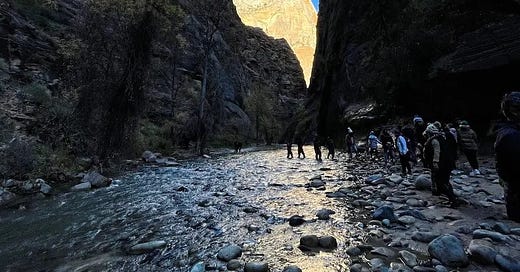





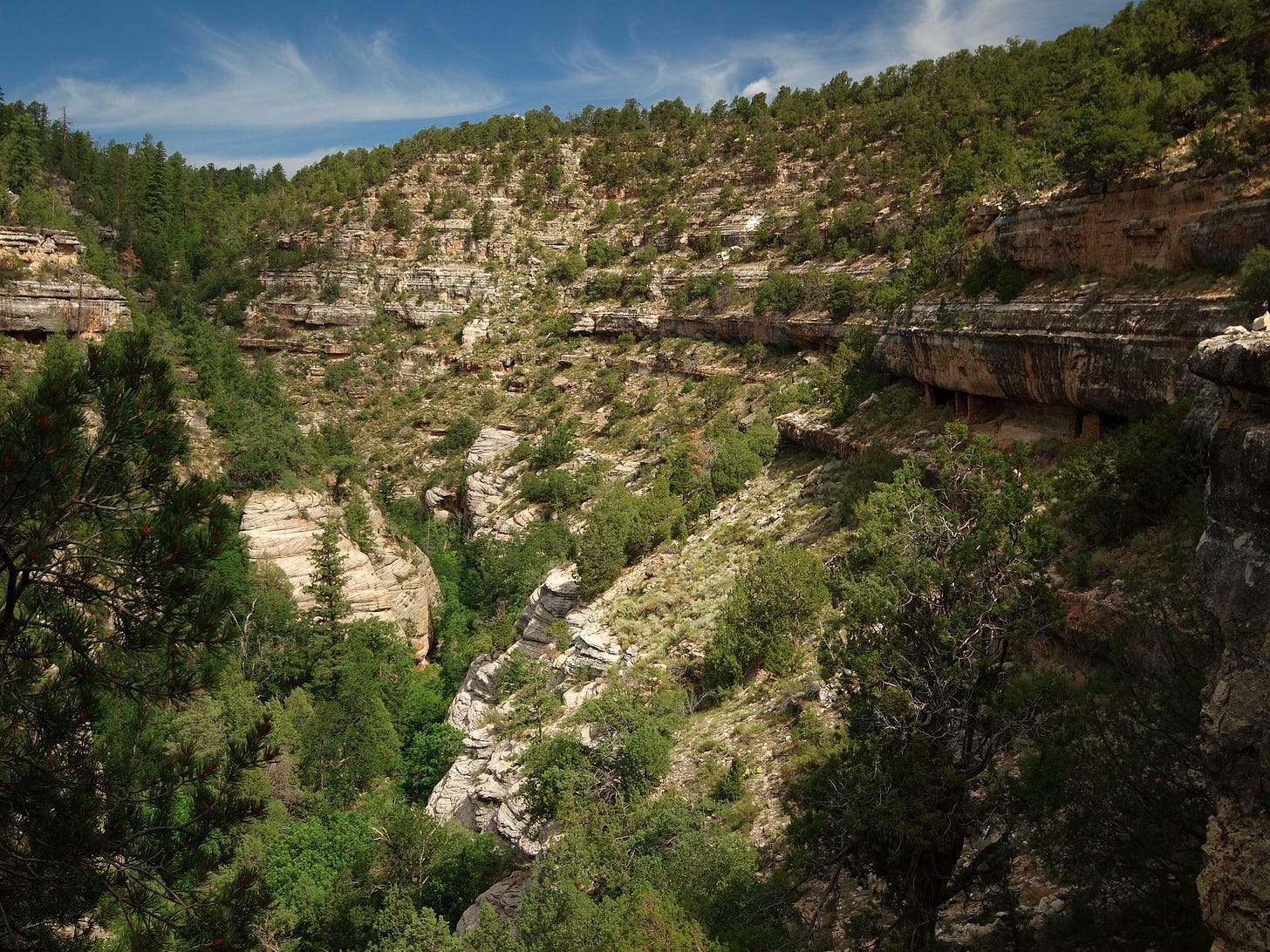

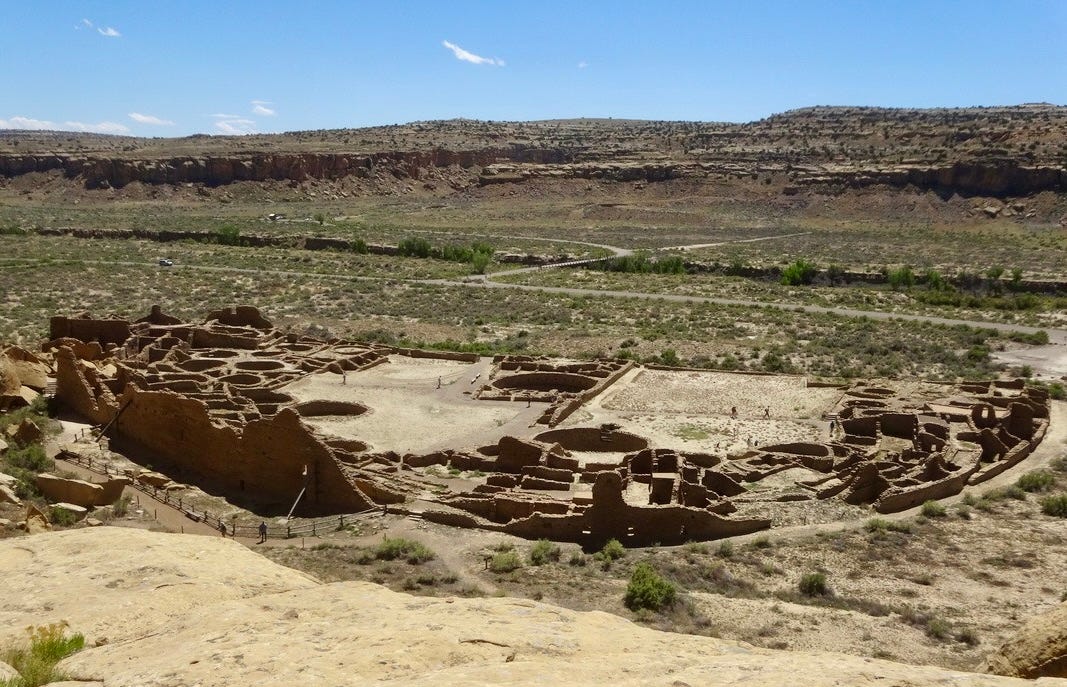
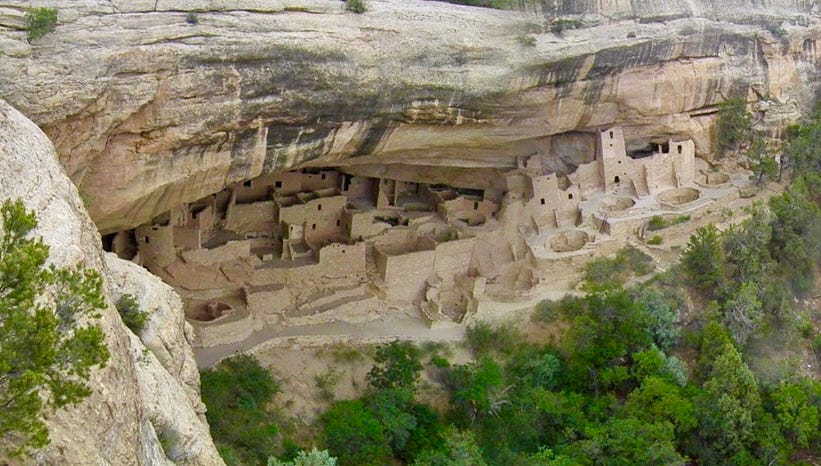


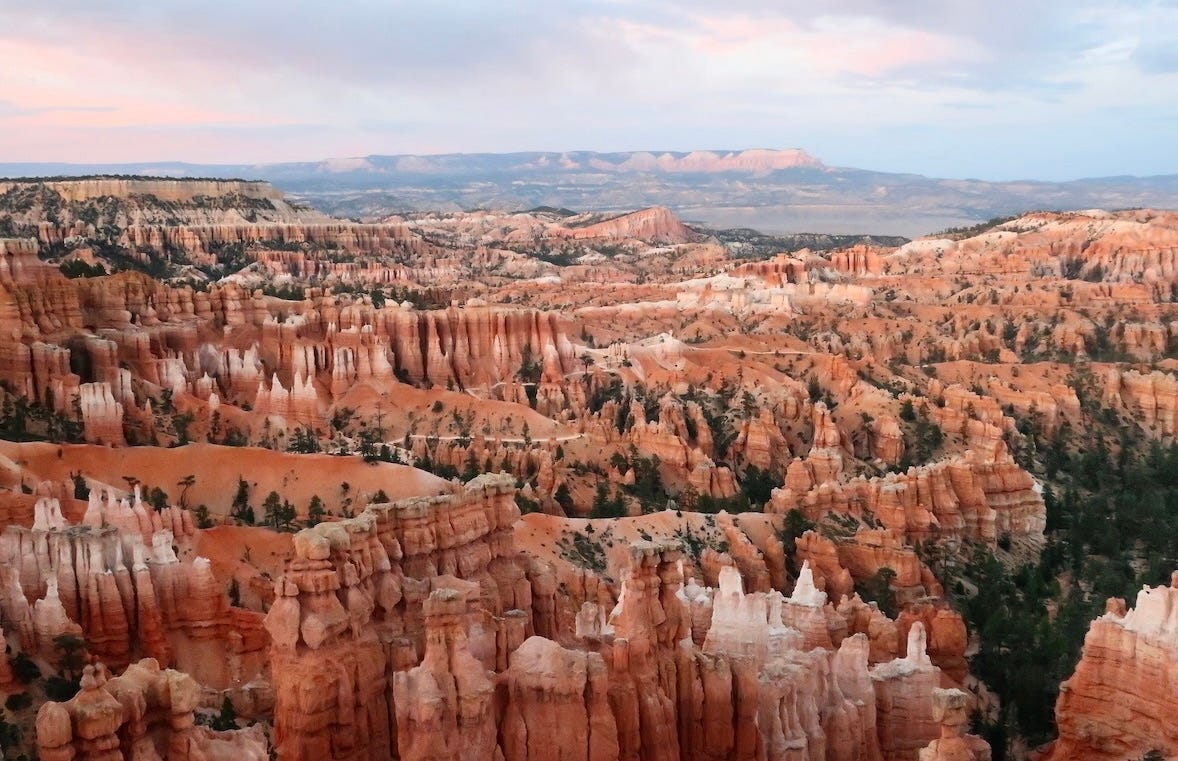
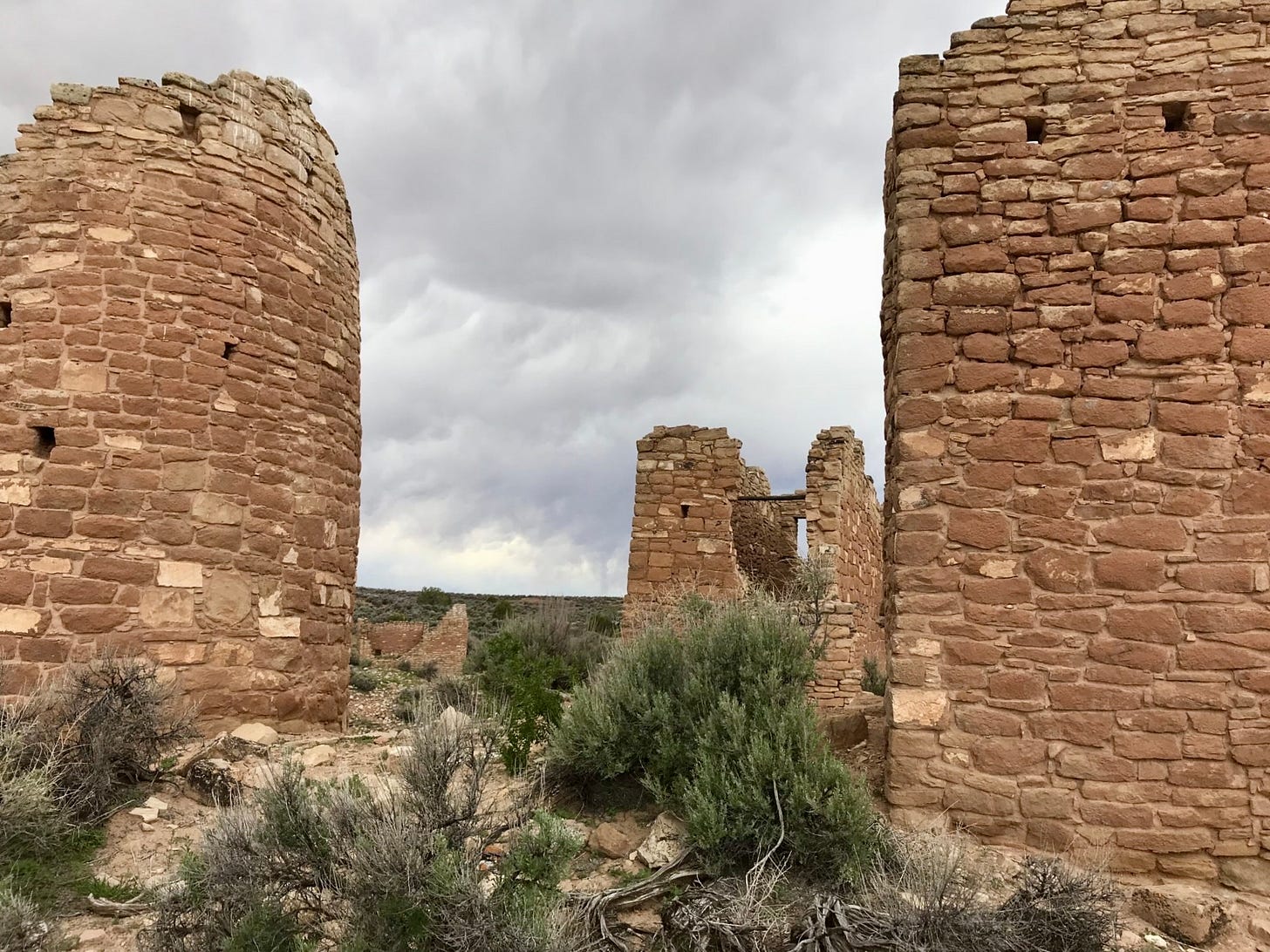






You've have made me homesick (as I have been out of the US for a year now). Some how we've missed the observatory at Chaco. Or maybe it just wasn't open when we were there. Not sure is Organ Pipe NP is a dark sky park, but we went to a night program there once when they had a pretty big portable telescope.
Thanks for reminding me how much I love our National Parks.
I spent hours looking up to the sky at the North Rim of the Grand Canyon. Thank you for drawing attention to the beauty of our national parks at night.